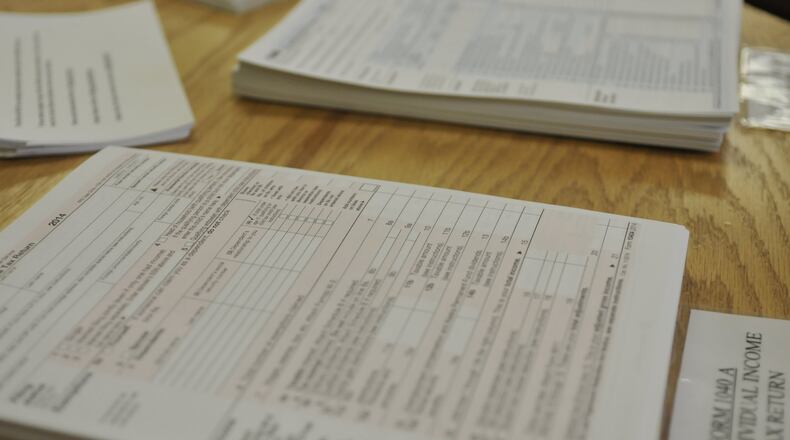Today, there's a 60-page booklet to help people fill out a two-page 8½-by-11-inch tax form.
Coley, R-Liberty Twp., intends to push forward in the 132nd General Assembly the campaign promise he made to institute a flat state income tax, which he said is "generally pretty popular" among colleagues as the goal "is to simplify" the tax code.
“It’s our hope and belief that it can be in the budget next year,” said the Butler County state lawmaker who currently is the vice chair for the Senate’s Finance Committee.
The final biennium budget under Ohio Gov. John Kasich will be introduced to the General Assembly early next year. Though Coley said the details of the plan are still being worked out, the math shows that a 3¼ or 3½ percent flat tax would be revenue neutral — not adding to or taking away from the state's $2 billion rainy day fund — and could bring in somewhere around $188 million a year.
The move could also mean that tax deductions, such as for being married and having children, could be eliminated at the state level.
Ohio Rep. Wes Retherford, R-Hamilton, is one of those state lawmakers on board with the flat tax idea.
“We have to see what it’s going to take to get it done without hampering our ability to have a sound budget,” he said.
Retherford said a flat tax would “make the most sense” at the state, as well as a federal, level “because it gives to consistency and stability for families and businesses.”
“Obviously anytime you can promote that stability, that’s one more additional step to make the business climate better in Ohio,” he said.
Joe Matvey, a CPA from West Chester Twp., said a concern he has with a flat tax is for those low-income residents “who may have to pay little to no state income tax” because of deductions.
“You’ll put more burden on those who have less to spend,” he said.
But the concept, Coley said, is to return to the time when Ohioans could do their state tax return on a post-card size form, which they essentially already do on a municipal level.
“Most of the people in the state pay a local income tax and those are all flat rates,” he said.
About the Author


